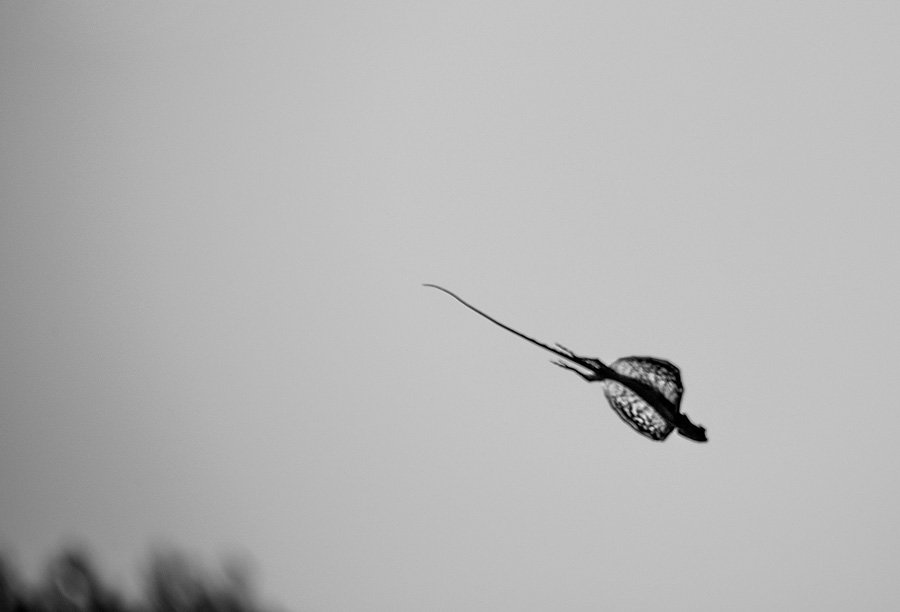
I photographed this flying lizard in a coffee estate near Chikmagalur, Karnataka, in February, 2013. While returning from field work, I noticed the animal busy feeding. I observed and followed it for sometime, then waited at a vantage point for it to take off.
Flying lizards of the genus Draco are members of the reptilian family Agamidae and are unique in their ability to glide from one tree to another. Draco is a species-rich genus with more than 40 species and subspecies inhabiting the tropical rainforests of south and southeast Asia (McGuire, 2001). Smith (1935) reports the presence of at least six species from the Indian subcontinent, of which or the Western Ghats or South Indian Flying Lizard (Draco dussumieri) is endemic to southern India and is the sole representative of the genus west of Assam. The recorded range of D. dussumieri shows a wide distribution along the Western Ghats in the states of Goa, Karnataka, Tamil Nadu and Kerala (Smith, 1935 and Daniel, 2002) and in some parts of the Eastern Ghats of Andhra Pradesh (Balachandran, 2000). Within this wide distributional range, D. dussumieri occurs in an equally diverse range of habitats including evergreen forests, moist and dry deciduous forests as well as teak, coconut and arecanut plantations (Smith, 1935).
Draco are arboreal insectivorous lizards and can glide from tree to tree using the wing-like membrane called patagium, which is supported by elongated thoracic ribs. They also possess an expandable gular (throat) appendage. These specialized anatomical features enhance the aerodynamic lift during gliding. The gular appendage is observed to be distinctly longer in males and, is also part of courtship and territorial displays along with more vividly coloured or patterned patagia. When on the trunk the membrane is folded back close to the body and when motionless it is difficult to locate the lizard due to cryptic colouration. Recent studies propose that the patagial pattern might be specific to individuals and can help in individual identification.
Studies in the Western Ghats have clearly revealed that while endemic agamid lizards like D. dussumieri continue to survive in rainforest fragments, they show a decline in their abundance due to habitat fragmentation caused by development, plantation agriculture, etc. Many of these forest fragments in the Western Ghats are under private ownership (corporate bodies and individuals) and have low levels of protection. Therefore, protection as well as restoration has to be promoted through education, economic incentives and legislation.
If you are interested in knowing more about this fascinating creature read Ecology and behaviour of the Western Ghats flying lizard by Dipti Humraskar.

 CI is a non-profit, non-commercial portal that aims to facilitate wildlife and nature conservation by providing reliable information and the tools needed to campaign effectively.
CI is a non-profit, non-commercial portal that aims to facilitate wildlife and nature conservation by providing reliable information and the tools needed to campaign effectively.
Chosen as 'Picture of the Week'
Studies have clearly shown that while endemic agamids like Flying Lizards continue to survive in rainforest fragments, they show a decline in their abundance due to habitat fragmentation.